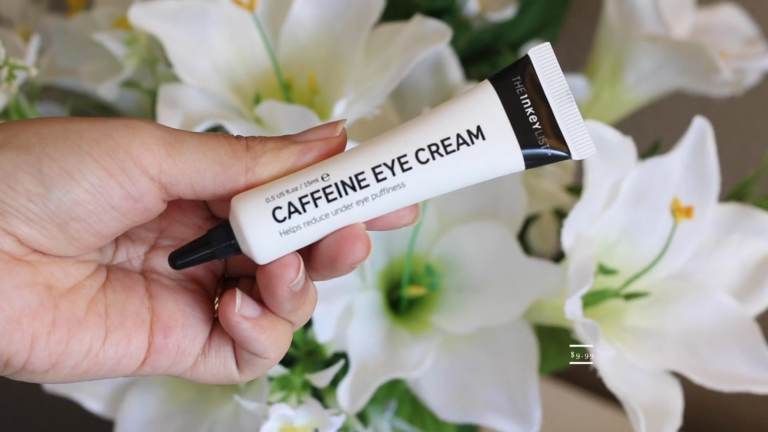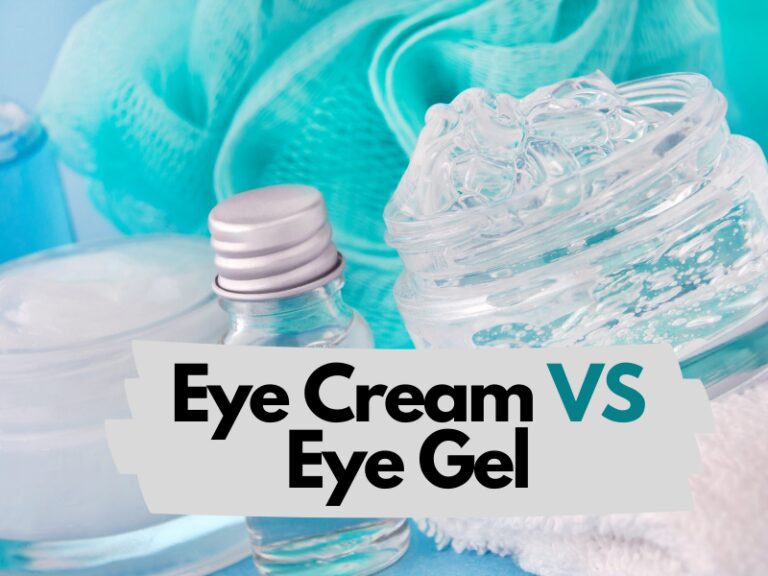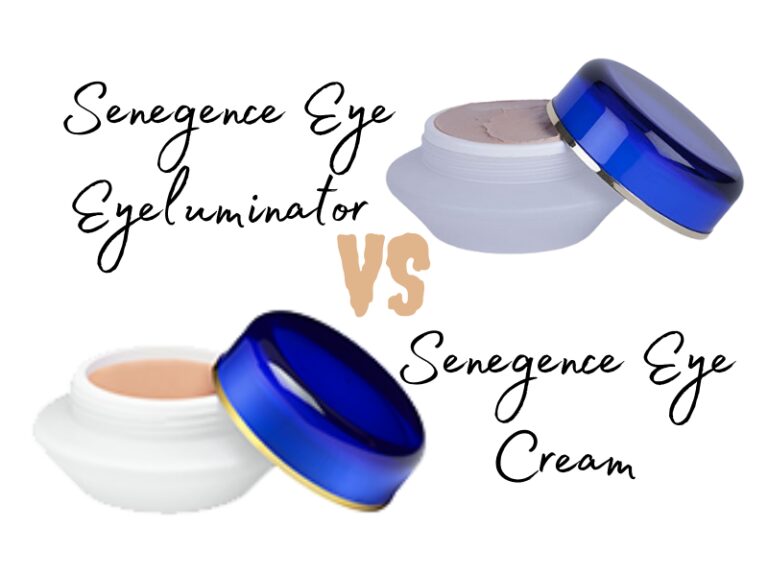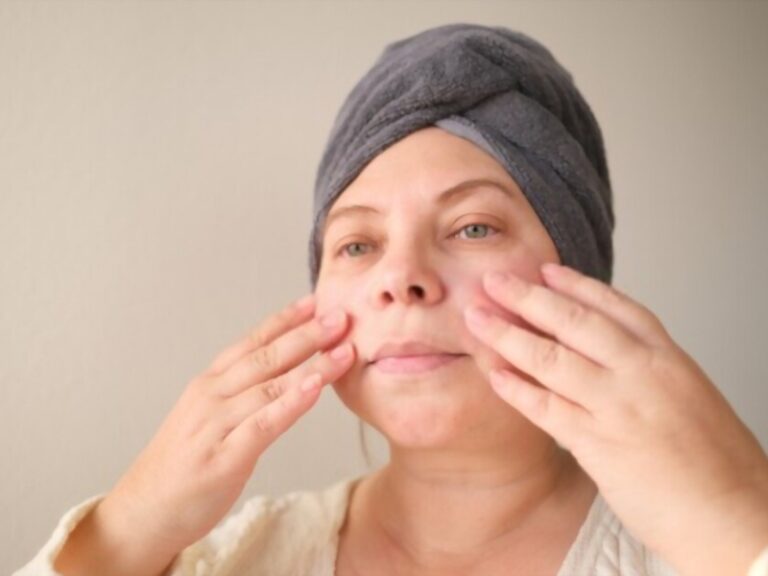Most people associate eczema with an itchy, red rash on their arms, legs, or even their face and scalp. You may not understand that people with eczema, also known as ectopic dermatitis, can develop eczema on their eyelids. Dermatitis of the eyelids is a frequent ailment.
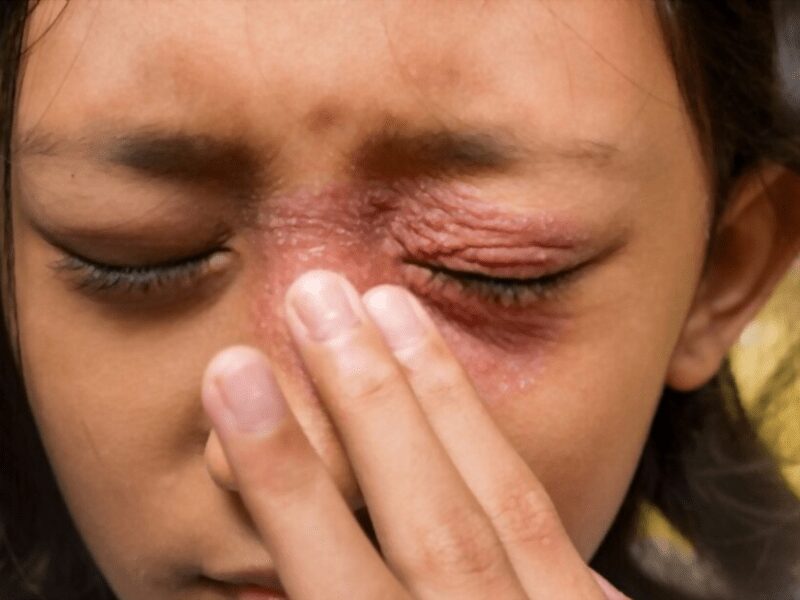
Our skilled dermatology team at Specialists in Dermatology in Tucson, Arizona, diagnoses and treats a wide range of skin disorders, including eczema, and eyelid dermatitis. Here’s what you can do if your eyes are itchy and puffy or if you have a rash on your upper eyelid.
Two forms of Eczema on the Eyelids
Atopic (allergic) contact dermatitis and irritant contact dermatitis are the two forms of eczema that can affect your eyelids. These are the same kinds of eczema that might appear in different parts of your body.
1: Atopic contact dermatitis
Atopic contact dermatitis develops when your skin reacts with a chemical that triggers an allergic reaction, resulting in an eczema rash. Your immune system creates antibodies in response to a material when you have an allergy to it. These antibodies also cause a chemical response in your cells, which causes eczema symptoms to flare up.
2: Contact dermatitis
Irritant contact dermatitis develops when your skin is regularly exposed to a mild irritant such as cosmetics, soap, or laundry detergent. Even if you aren’t allergic to the drug, it might induce symptoms.
The same factors that produce atopic contact dermatitis can also induce irritating contact dermatitis in certain people. It all depends on how the allergen or drug affects your immune system.
Eyelid Dermatitis Symptoms
You may feel symptoms in one or both eyes if you have either form of eyelid dermatitis. Eyelid eczema can manifest itself as sporadic symptoms or as a chronic condition.
- A red, scaly rash on your eyelids is one of the most common symptoms
- Itching and swelling around the eyes
- Skin irritation
- Pain or burning in and around the eyes
It might be challenging to pinpoint what’s causing your symptoms to flare up or become chronic, but it’s generally an allergy or sensitivity to something in your surroundings.
Keep a journal every day
If you have eczema on your eyelids, keep a notebook in which you list all of the goods you use daily—skincare, hair products, soaps, and fragrances—to see if you can pinpoint an element that is aggravating your symptoms. The following are some of the most prevalent causes of eyelid eczema:
Atopic contact dermatitis is a kind of atopic dermatitis that affects
- Metals
- Specific drugs
- Pet dander
- Dust mites
- Contact lens solution
- Latex and rubber products
- Eye makeup
- Facial cleanser
- Moisturize
- Hair coloring
Irritant Contact Dermatitis
Temperatures that are too hot or too cold; humidity; dry air; insect bites; bleach; chlorine; dust particles; new carpet; rubbing alcohol Irritant contact dermatitis
You can delete the product from your personal care or house cleaning regimen after discovering the chemicals that irritate the skin around your eyes and eyelids. If you’re having trouble figuring out what’s causing your eye discomfort?
Symptom Relieving Remedies from Eczema
To ease discomfort, avoid more irritation, and prevent infection from rubbing and scratching your eyes, try some at-home treatments first.
- As a remedy, discontinue eye makeup or switch to hypoallergenic products.
- Apply cold compresses to your eyes.
- Avoid products containing formaldehyde, lanolin, or parabens. If you deal with chemicals, wear protective eyewear.
- You can moisturize your eyelids with an over-the-counter anti-itch ointment that is safe for the eye region for quick relief.
- We may give anti-inflammatory drugs or corticosteroids if creams only provide short relief. Corticosteroid cream can be applied directly to inflamed eyelids to alleviate inflammation and dry, flaky skin.
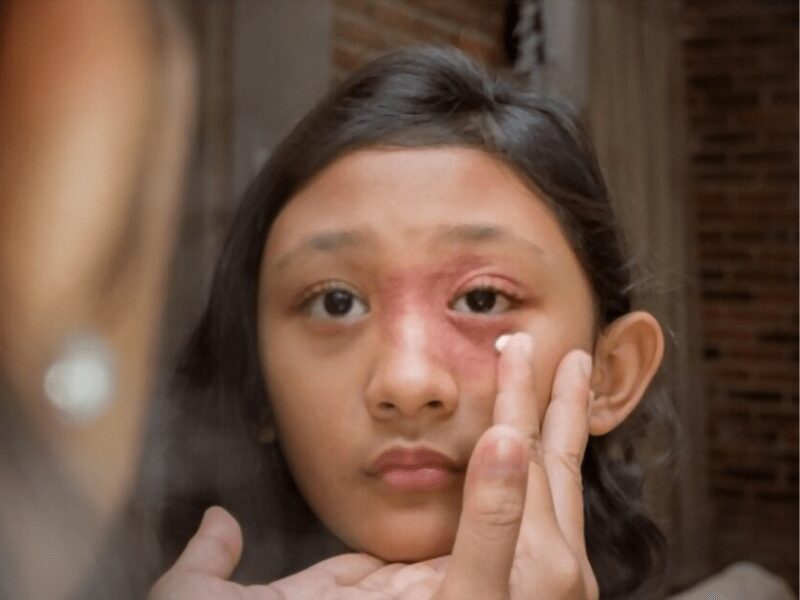
What to do if you have hives on your arms and legs?
Hives are a type of rash that appears when the body reacts to something. They can appear on any part of the body. Hives are more prevalent on the arms and legs because the limbs are more exposed to external stimuli.
Mast cells, part of the immune system, cause hives when they release histamine into the skin, triggering an allergic reaction. The immune system produces histamine, a chemical messenger in response to an injury or an allergic reaction.
Mast cells are responsible for hives and how long they last?
When mast cells more profound in the skin release histamine, a similar process known as angioedema occurs. Hives can form due to an allergic reaction to food, medicine, or anything in the environment, such as being licked by a dog or due to non-allergic causes, such as infection or inflammation. Individual hives usually disappear within a few days. On the other hand, Urticaria might last for weeks or even months. This can lead to new hives when the old ones die off.
Hives can affect anyone at any age. They’re frequent in places on the body where there’s a lot of pressure, including the waistline.
Causes of Eczema Around the Eyes
- Physical triggers, such as pressure; allergic reactions, food allergies; and medical conditions, such as infection, can all cause hives.
- Triggers induce the immune system to react by releasing histamines and other chemicals into the skin, causing hives.
- Medication, such as penicillin or anti-inflammatory medications, can be triggered.
- Bacterial infections like strep throat; viral infections like infectious mononucleosis; contact triggers like latex; insect bites or stings
- Physical conditions, such as cold temperatures or high pressure• airborne allergens such as pollen or mold spores
- In some cases, urticaria can be a hereditary disorder.
- Idiopathic urticaria refers to hives that have no recognized cause.
If hives occur only on the arms,
Urticaria can be Either Acute or Chronic
Symptoms of acute urticaria disappear after a few days. However, when a person has chronic urticaria, the illness can last much longer. Chronic urticaria comes in a variety of forms:
Chronic spontaneous urticaria is characterized by an unknown cause and symptoms that occur at least twice a week. Chronic inducible urticaria is characterized by hives triggered by particular physical stimuli, such as pressure. Even though episodic chronic urticaria and chronic inducible urticaria may coexist, symptoms typically occur fewer than twice per week.
Medications
Over-the-counter (OTC) medications, prescription medications, and home cures are available as treatment alternatives.
For example, antihistamines are available over-the-counter and can be used in higher amounts than doctors typically prescribe.
If over-the-counter medications don’t work, a doctor may prescribe sedating antihistamines.
- Cyclosporine
- Omalizumab (the only FDA-approved therapy for chronic urticaria)
- Short-term systemic corticosteroids
Hives sometimes go away on their own, so medicine may not always be necessary. applying a cool compress to the affected area; taking a refreshing bath; avoiding tight or irritating clothing in favor of loose, cotton clothing; avoiding extremely hot or cold conditions; avoiding activities that promote sweating
Avoid the Occurrence
Hives on the arms and legs are not always preventable since around half of the patients with chronic urticaria never discover what causes their hives to occur. If a definite trigger exists, the most effective preventative action is to avoid it.
When should you see a doctor?
If hives persist for more than 6 weeks, OTC medication is ineffective, or people wish to rule out allergies, they should see a doctor. Photographing hives before an appointment might assist a doctor in making a diagnosis because the skin may clear up before the visit. Angioedema occurs when a rash is accompanied by swelling beneath the skin. This illness has similar symptoms, but it needs prompt treatment because it can produce life-threatening swelling that impairs breathing.
Anyone who feels they have angioedema should consult a doctor as soon as possible to get a diagnosis.
As a result of anaphylaxis, a person may suffer from anaphylactic shock.
Summary
As recommended by your doctor or another medical professional, emollients and moderate topical steroids are used to treat eyelid eczema. Given the thinness of the eyelid skin, only modest topical steroids (0.5–1% hydrocortisone) are prescribed for eyelid eczema. The immune system releases histamines and other substances into the skin, causing hives or wheals in reaction to stimuli.
Urticaria can be severe and last for up to six weeks. Chronic urticaria lasts much longer. The hives themselves will disappear after 24 hours, although flare-ups may occur as new colonies form.
Hives can be caused by physical triggers, allergic responses, or medical disorders, and they can appear anywhere on the body. The arms and legs are more prone to respond because they are exposed to more contact stimuli, such as allergens. Hives are unpleasant and inconvenient, but they usually disappear on their own. A chilly compress, for example, can help relieve discomfort.
If your urticaria symptoms persist, you should see a doctor.

